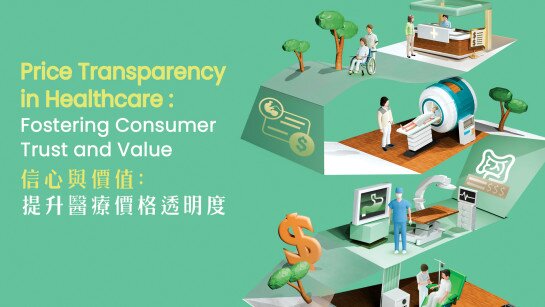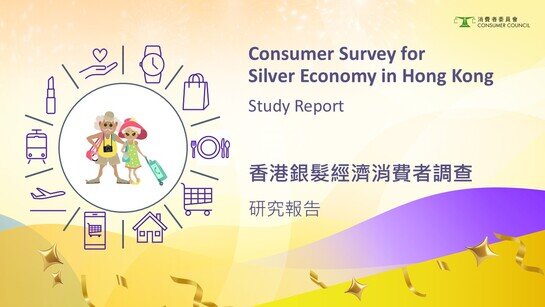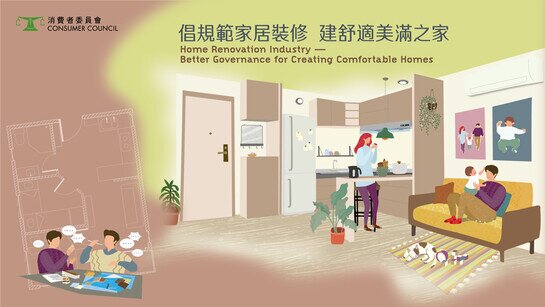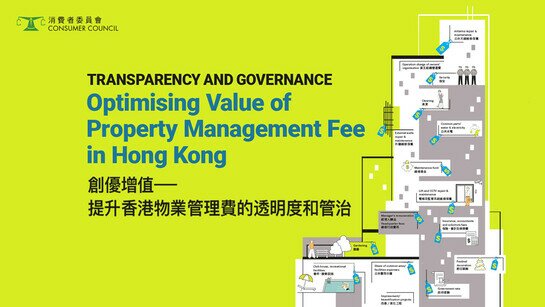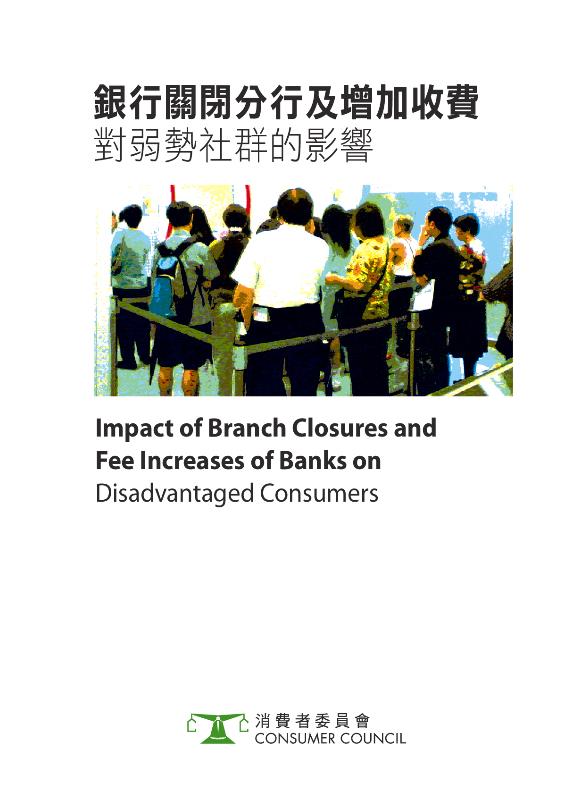
Introduction
- In recent years there has been a substantial reduction in the number of manned bank branches in Hong Kong. According to a survey of 23 retail banks conducted by the Consumer Council (CC) in 2006, the number of branches had shrunk from about 1,463 bank branches in 2001 to 1,209 in May 2006, an overall reduction of 254 branches; or 17%. Nonetheless, against this background of fewer bank branches has emerged growth in the number of ATMs, and online banking transactions. As at March 2007, there are a total of 2,400 ATMs between the two ATM networks in Hong Kong.
- Representatives of CC attended a meeting of the Legislative Council's (LegCo) Panel on Financial Affairs on 3 July 2006. During the meeting, CC's representatives expressed the need for a more detailed study to gauge consumers' experiences and expectations of banking services at a district level. This subsequent study focuses on the impact of branch closures and fee increases of banks on disadvantaged consumers in Sham Shui Po, Kwun Tong and Tin Shui Wai. The districts were selected on the criteria of low household income level. Five focus groups and three field visits were conducted between 9 October and 16 October 2006, to look into the accessibility of banking services to senior citizens, low-income groups and disabled persons in these three districts.
Issues Studied
- This study covers the following issues:
- Consumers' views on branch closures in relation to:
- availability of choice
- convenience of using bank services
- access to banking services
- use of alternative service delivery channels
- barriers to switching between different banks
- Consumers' views on bank fees and the use of banking services in relation to:
- affordability
- transparency
- communication
- What can be done to make banks more accessible and to minimize the cost of banking to the poor?
- What measures can the Government and the banking sector undertake in order to alleviate the problems that have arisen?
- Consumers' views on branch closures in relation to:
Findings of Study
- For many respondents, a bank branch remains the basic means through which they are comfortably able to manage their money. Access to bank branch serves a critical need in the daily life of disadvantaged consumers in the community. A majority of the respondents believed that banks, as corporate citizens, should act upon their social obligations and have regard to the needs of the community. Respondents of this study found bank branch closure disappointing and their concern centred around affordability, access, service quality and convenience. A summary of consumers' comments on the changing banking environment is as follows:
Branch closures - access to services
- Respondents noted a reduction in branch services where they live and where they bank; and that major banks had shut down branches in underprivileged areas.
- Some respondents have experienced a reduction of branch services to the extent that they are now virtually without access to their bank branches in their community compared to before. As an example, people living 5-10 minutes (walking distance for an average person) from the nearest branch in the past, now have to take 30-45 minutes (for an average person) to walk or take transportation to a specific bank branch from their housing estates; as in the case of Lam Tin.
- It was generally the case that either no branch or only one branch (but no more than 2 branches) was available in the housing estates studied. As a comparison between different areas in Hong Kong, four large scale housing estates only have one bank branch despite a population of more than 45,000 (in the case of Kwun Tong - Four 'Shun'), whereas there is roughly one bank per 1,400 persons in an affluent area such as Wanchai.
Use of ATMs
- The use of ATMs, on-line banking services, or the withdrawal of cash from chain store retailers, have not been widely used as alternatives due to a variety of reasons. The primary reasons being the lack of knowledge on the relevant procedures for using the machines, and implications of using the services, such as the costs involved.
- JETCO[ 1 ] and ATM[ 2 ] are not interconnected at present (except via Visa/Plus or MasterCard/Cirrus network). Therefore, where only one ATM service is available nearby, those consumers who are not able to use it have no choice but to either switch banks, or travel a considerable distance from home in order to have access.
- The use of ATMs incurs a cost[ 3 ] . While this might seem affordable, it can be prohibitive for less privileged customers, and for the elderly, the risk of losing a card or forgetting a PIN number can be high.
- Many elderly consumers were not aware that cash withdrawals at supermarket chains were currently available. In any event, these types of transactions could be a burden for some consumers.
Cost of banking
- Many elderly, disabled and low-income people cannot afford to travel a long way to have access to their money. Some people living in the studied areas are virtually without access to their bank branches in their community. As a result, many have had to use a branch that is far away from their home. As noted above, some need to rely on transportation, or else walk for 30-45 minutes or more, to reach a branch of their bank, which involved substantial transport and time costs.
- The decline in number of bank branches and the rise of alternative services (e.g. the use of ATMs) in low-income areas mean that those communities most in need of manned service pay more for basic banking services, because the use of ATMs incurs a cost.
Complex switching procedures
- Respondents were concerned with the barriers to switching to another bank after their branch closes. For example, complications involved in changing from one bank to another due to the number and nature of identification documents needed to confirm benefit recipient status; having to notify the Social Welfare Department and the time taken to effect the change which might create gaps impacting on the benefit payments; the time delay in switching banks and adverse effect on automatic payment of utility bills; the administrative charge for setting up a new auto-payment account; and the general lack of knowledge on the procedures involved.
Bank fees
- Bank fees and charges were regarded as particular concerns because "money is tight". Many respondents felt that they did not have any choice but to pay, as almost all banks imposed fees and charges, waiver accounts exempted.
- Although fee waivers are available from some banks, which were appreciated, many respondents were not aware which fee waivers were currently available to them.
Quality of banking service
- Some respondents commented that "service quality of banking staff is better than before", but others felt "banking services in general are going backwards in view of the increasing bank fees and the sharp reduction in bank branches." Broadly, the latter view prevailed when considering quality of service; one reason being that remaining branches to which respondents had to turn were not felt to be adequately resourced to cope with increased numbers of customers.
- Some bank branches were not considered to be adequately set up for disabled persons. For example, some banks had recently moved frequently used counter services to upper floors or basements, whereas privilege banking services were moved to the more easily accessible ground floor location. Some bank branches have not yet provided access for physically disabled persons. One respondent noted that "I've had to shout out for help outside a bank branch because the branch has no access facility for the disabled, in addition the branch counter is too high and I have to speak very loudly to get myself heard."
Recommendations
- In light of the above findings, CC proposes a list of recommendations to be considered by the various stakeholders, including banks, the Government and regulatory authorities, to improve access to bank branches; reduce barriers to switching banks; facilitate the use of ATMs and other automatic banking facilities; ensure fair and reasonable bank charges; and increase the transparency of fee waiver policies. A summary of CC's recommendations is as follows:
What the banking sector can do
Branch closures
- In the event of branch closure, inform customers of the location of the nearest branch, and nearby ATM machines where customers can obtain service.
- Explore the feasibility of introducing mobile branches in those underprivileged areas that do not have a bank branch or an ATM or in communities with a high proportion of aged population.
Use of ATMs
- Through continuous industry-and community-wide campaigns to provide instruction for consumers, not limited to the elderly, on how to use ATMs, and other alternative services [ 4 ] .
- Proactively outreach to the community through working with social services organizations, volunteers groups and self-help organizations to reach out to people with special needs, for the provision of talks and instruction sessions on the use of ATMs.
- Use biometrics technology (such as finger print or retina) as an alternative to PIN for accessing ATM services.
- While there may be technical difficulties involved and concern that combination of the two ATM networks may lead to streamlining to minimize overlap, the banking sector should seriously consider interconnecting the two ATM networks to enhance accessibility. Interconnection between networks is currently available in some countries. In Australia, for example, every holder of a debit or credit card can access any of the ATM facilities or EFTPOS terminals in that country [ 5 ] .
- JETCO and ATM should provide convenient access to consumers, and the service should be provided cost free to disadvantaged consumers.
Cost of banking
- Explore avenues for micro-payment to consumers with no strings attached, for example, consumers may obtain cash from a retail check out point without having to buy something at the same time.
Complex switching procedures
- Assist customers in their requests to switch to other banks in the event of branch closures. In this regard, the banking sector should discuss how best to streamline procedures for switching between banks by offering a one stop service that will facilitate the switching of accounts for their customers; particularly for Comprehensive Social Security Assistance Scheme and Disability Allowance recipients.
- Provide value-added banking facilities (e.g., passbook checking machine) to create incentive for bank switching (checking bank balance is crucial for those with limited means, yet in some districts, the only bank branch available does not have such a service).
Bank fees
- Improve the transparency of bank fee waiver policy by posting information and brochures in every branch. Make such information available to elderly homes/centres and self-help groups/social services centres for disabled persons.
- In relation to underprivileged consumers, introduce a waiver on the application of penalties associated with the issue of a replacement card and other fees such as counter service fees.
- Expand the scope of fee-free account by making free limited number of transactions made at branch counters.
- Standardize the documentation requirements for granting a fee waiver.
- Provide automatic fee waiver to qualified consumers, i.e. Comprehensive Social Security Assistance Scheme and Social Security Allowance Scheme recipients.
Quality of banking service
- Maintain an appropriate level of resources in branches where nearby branches have been closed, in order to cope with increased customer numbers.
- Provide a user-friendly environment in bank branches for the physically disabled.
- Take into account the needs of the less mobile elderly and disabled persons in the relocation of frequently used branch counter services from the ground floor to less accessible upper floors or basements, unless escalator or other access facilities is available.
- Make arrangement to shorten the waiting time for branch counter services for the elderly and disabled persons.
What the Government can do
- Make special provisions in order to attract banks to open up branches in public housing estates where there are few or no bank branches; to continue to explore whether post offices can provide micro-payments.
- Maintain a concern with accessibility of basic banking services to all in the community and monitor branch access in underprivileged areas to ensure fair access for disadvantaged consumers.
- Study the need for introducing a standard basic bank account to consumers, similar to that available in other countries. For example, in France, Canada and the US, the right to access a basic banking service has been enshrined in law.
- Engage with the banking sector to ensure the streamlining of procedures to facilitate 'portability' of bank accounts for welfare benefit recipients.
- Explore the means to minimize the time difference for consumers in receiving benefit payments from different banks, so that benefit recipients' choice of banks, and therefore access to the closest possible branch, will not be unduly limited. CC understands that the Social Welfare Department has lately initiated arrangement for benefit recipients to receive social security benefits on the same pay date, irrespective of the recipients' choice of banks. However, the latest feedback CC collected from some banks and social security field units as at end of March is that there may still a difference in the time benefit payment recipients get paid from different banks.
What consumers can do
- Consolidate bank accounts to avoid unnecessary bank service charges.
- Switch to another bank in a convenient location when a branch closure arises.
- Seek help from bank staff to learn to use ATMs or other automatic banking facilities where practicable.
- Utilize EPS cashback service available at retail outlets such as convenience stores in obtaining cash.
- Select the most suitable bank account to cater for one's own circumstances (e.g. an account operated by ATMs with no minimum account balance requirement) by asking for and comparing information available.
- Bank from home (via telephone, email and internet) to reduce the impact of transport and building access barriers for customers with disabilities.
Response from HKAB
- In view of the focus of CC's study being banking services delivered through bank branches in three specific locations to selected customer segments, the Hong Kong Association of Banks (HKAB) considers it important to highlight that Hong Kong is one of the top cities in the world with the highest concentration of bank branches and ATMs per population and land area, and offers round-the-clock banking and financial services through a combination of channels including the internet. Apart from ATMs and bank branches, customers making purchases at selected retail outlets can withdraw cash using EPS facilities.
- HKAB also points out that consumers in general have benefited from intensive competition in interest rates (both deposit and borrowing) and innovation in banking products/services. From this perspective, HKAB believes it is important to bear in mind the interests of the general body of consumers in addressing the issue of bank branch closure.
- Details of HKAB's feedback and comments on CC's recommendations are set out in section VI of CC's full report.
1. JETCO refers to Joint Electronic Teller Services Limited.
2. ATM refers to automatic teller machines under the HSBC Group (HSBC and HSB).
3. From CC's survey of 23 banks in May 2006, of 21 banks that provided ATM service, 6 provided it for free, 1 charged an annual fee of $30 while the remaining 14 all charged $50 for it.
4. HKAB has launched an educational campaign on the use of ATMs on 11th March 2007.
5. Joint Media Release of the Australian Bankers' Association and Australian Payments Clearing Association released on 13 October 2006.






